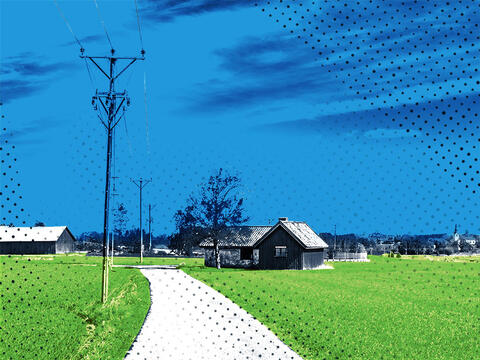Population: 154,064
Land Area: 31 square miles
Internet Access: 78%
Read more about Springfield's experiences in our first location report.
What happened to the billions of taxpayer dollars that went to local communities during the pandemic? Did the relief programs work? We visited six communities that received a combined $2.65 billion in federal funding to get answers.
Our work on the ground revealed valuable information about communities’ experiences with pandemic funding and programs. This report highlights key considerations for emergency preparedness as lawmakers and agencies fund, design, and implement government programs in the future.
The six communities shared similar experiences even though their populations, demographics, and locations throughout the U.S. were unique. Here are four key insights that community leaders and local officials shared:

While communities appreciated pandemic relief funding, new and changing program guidance or reporting requirements caused confusion and additional burdens.

Community leaders’ extensive knowledge of their residents’ challenges and needs, coupled with their ability to build and maintain trust, was key to successful pandemic response efforts.

Pre-existing challenges remained, and were even amplified, during the pandemic such as staffing and internet limitations. Because of this, rural counties and Tribal reservations may have faced more challenges in pandemic response efforts.

Community leaders had to address several non-health-related challenges created by the pandemic, such as food insecurity, maintaining public safety, and supporting small businesses. These challenges affected every aspect of community life, many of which lingered more than two years into the pandemic.
We identified four considerations to enhance emergency preparedness now and in the future:
Using existing structures Programs that existed before the pandemic already had operational structures in place. and communications channels makes it easier to conduct outreach with the community and perform program administration services during an emergency. If existing structures Programs that existed before the pandemic already had operational structures in place. or channels can't be used, federal agencies could consider partnering with states to subgrant A subgrant is an award made by a direct recipient of federal funding to another entity. For example, the federal government awards a grant to a state who then awards a subgrant to a local government. funds to local governments or other organizations.
Being mindful of local staffing limitations when developing programs helps communities follow federal program guidance, understand allowable uses An allowable use is any expenditure on which an entity can spend funding. of funds, and track a myriad of other program requirements. This is especially important for smaller communities with less administrative staff available.
Allowing for as many funding flexibilities as possible helps local officials, who are familiar with the situation in their area, customize responses and address challenges specific to their community. For example, flexibility with timeframes for spending funds may allow a community to make strategic investments and address longer-term concerns as it recovers from an emergency.
Enhancing internet access and information technology modernization efforts in rural communities helps them social distance, work remotely, and streamline operations.
Read the full report, Pandemic Relief Experiences: A Focus on Six Communities, here.
When we conducted the work for this report, we found that following the money in the six communities was challenging because of missing, hard to find, or meaningless federal spending data.
Read the report to learn what we know, what we don't know, and why it matters.